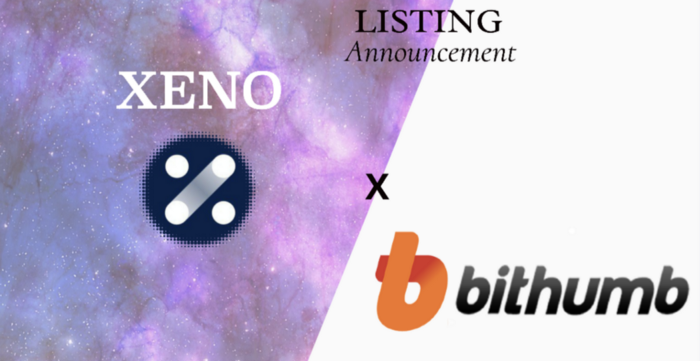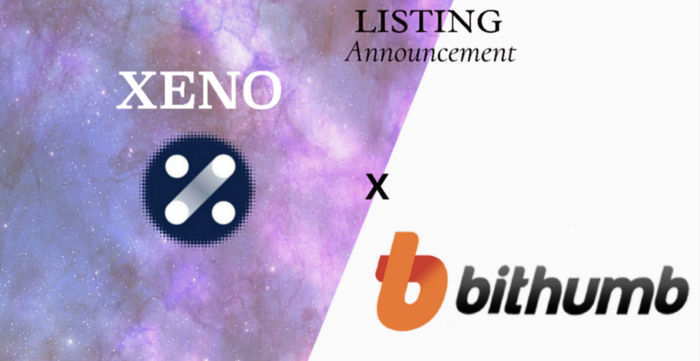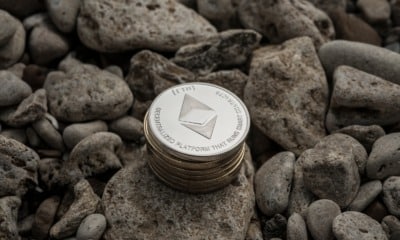Blogs
Fighting it out for the Top Spot: EOS against Ethereum

The Cryptocurrency marketplace has been receiving hype, both from the media and the investor community at large. The majority of the industry’s focus is on projects and platforms that highlight the decentralized nature of trading with such cryptocurrencies, with Bitcoin undeniably claiming the top spot. However, over time, newer alternative networks like Ethereum started to emerge, providing more efficiency to capitalize on the untapped capabilities of blockchain technology. While Ethereum had been the “go to” platform for developing decentralized applications, fledgling projects like EOS have now turned into quite a threat to Ethereum’s position. EOS aims to address all the plaguing issues such as scalability on the Ethereum Network and is thus marketed and structured quite differently from Ethereum.
Current market Scenario for Ethereum and EOS
Both Ethereum and EOS are major players in the crypto-space, with Ethereum undoubtedly claiming the higher ranking, ranked 2nd, as of 24/04/2018 in terms of market cap. EOS, a relatively new arrival in the dApp market, has since achieved a ranking of 5th at the time of writing, which is indicative of the success attained by the EOS team over such a short time. Although Ethereum’s market cap of $67,624,318,227 is considerably greater than EOS’s $11,077,704,597 market cap, EOS has enjoyed significant success this year compared to a rather low performing first quarter for Ethereum. In terms of growth, EOS was trading at a high of $6.76 on March 25th to $11.79 on April 23rd. Comparing this with Ethereum’s value, which rose from $ 535.82 to $ 646.70, EOS has definitely seen more of a growth than its older counterpart.
Major Points of Competition between EOS and Ethereum
Both Ethereum and EOS are platforms for developing decentralized apps on the blockchain network, with Ethereum being the first to introduce the smart contracts functionality to its blockchain. Smart Contracts are the main basis for decentralization and eliminate the risk of fraud or malicious third party interference. EOS’s platform is based on the Ethereum model with some major improvements including higher transaction processing speeds and lower transaction fees. Below are some points of difference between both networks in terms of usage.
- Target markets: When it comes to targeting users, Ethereum and EOS have quite a different approach, with Ethereum receiving funding from different investors through crowd sales and private investments. Ethereum currently is the number one choice for bigger organizations for developing their own dApp on a secure blockchain network.
EOS, on the other hand, focuses mainly on independent developers who are looking to produce a diverse range of dApps efficiently and with a profit. This is because EOS has no transaction fees, which are really helpful for users on a tight budget. - Protocols: Ethereum uses the Proof-of-Work protocol, capable of processing an average of 15 transactions /second. The proof-of-Work consensus protocol requires miners to prove their verification speeds on the network to claim a reward or return. It also allows the Ethereum network to automatically address issues with any dApps on its network. On the other hand, EOS uses a delegated Proof-Of-Stake protocol which is designed to eliminate the “bottleneck” experienced by the Ethereum network. It is radically different than the PoW protocol, as developers can easily address issues in a dApp without freezing or affecting other accounts on the network. This is also the prime reason for EOS’s instantaneous transactions.
- Programming Language: When it comes to programming languages, Ethereum can only use “Solidity” a native programming language designed for Ethereum. EOS, on the other hand, has the ability to use any programming language which is compatible with Web Assembly. This includes C++, which is preferred by an overwhelming majority of developers in the industry.
Closing thoughts
Both EOS and Ethereum currently hold the top spots for dApp development on the blockchain network. Ethereum’s older model may have some lingering scalability issues but is still preferred by industry leaders due to its reputation and longevity in the market. On the other hand, EOS caters towards developers as well as users who prefer faster transaction processing speeds, as well as lower transaction costs. Overall, the success of both projects depends on the future plans of both teams, as well as the degree of adoption these platforms experience among the general populous.
For the latest cryptocurrency news, join our Telegram!
Disclaimer: This article should not be taken as, and is not intended to provide, investment advice. Global Coin Report and/or its affiliates, employees, writers, and subcontractors are cryptocurrency investors and from time to time may or may not have holdings in some of the coins or tokens they cover. Please conduct your own thorough research before investing in any cryptocurrency and read our full disclaimer.
Image courtesy of Rogelio A. Galaviz C. via Flickr
Altcoins
XNO Token of Xeno NFT Hub listed on Bithumb Korea Exchange


Hong Kong, Hong Kong, 25th January, 2021, // ChainWire //
Xeno Holdings Limited (xno.live ), a blockchain solutions company based in Hong Kong, has announced the listing of its ecosystem utility token XNO on the ‘Bithumb Korea’ cryptocurrency exchange on January 21st 2021.
Xeno NFT Hub (market.xno.live ), developed by Xeno Holdings, enables easy minting of digital items into NFTs while also providing a marketplace where anyone can securely trade NFTs.
The Xeno NFT Hub project team includes former members of the technology project Yosemite X based in San Francisco and professionals such as Gabby Dizon who is a games industry expert and NFT space influencer based in Southeast Asia.
NFT(Non-Fungible Token) technology has recently gained huge focus in the blockchain arena and beyond, making waves in the online gaming sector, the art world, and the digital copyrights industry in recent years. The strongest feature of NFTs is that “NFTs are unique digital assets that cannot be replaced or forged”. Unlike fungible tokens such as Bitcoin or Ether, NFTs are not interchangeable for other tokens of the same type but instead each NFT has a unique value and specific information that cannot be replaced. This fact makes NFTs the perfect solution to record and prove ownership of digital and real-world items like works of art, game items, limited-edition collectibles, and more. One of the ways to have a successful…
Altcoins
Should Crypto Projects Devote Resources to Community Growth and Marketing?

2020 has been an incredible year for crypto as investors have generated windfall profits and crypto projects have seen their businesses gain the spotlight they’ve been looking for. While Bitcoin has received most of the attention after major institutional investors announced they were accumulating the increasingly scarce asset, many altcoins have also seen their fair share of glory. When looking at all the big winners of the past year, the first project that probably comes to mind is Chainlink, having appreciated by more than 550% YTD and now valued at over $4.5 billion. But, the actual biggest winner of the year is HEX with a YTD return of over 5,000%.
I mention both of the above projects as they have each taken slightly different paths to achieve greatness. Chainlink has devoted resources toward building a fundamentally sound business with many strategic partnerships while HEX has spent vast sums of money on marketing and promotion. Both approaches are valid, but one thing is certain, it is absolutely imperative for crypto projects to let the crypto community know what makes them special. Of course, one of the reasons that makes crypto so valuable is the powerful blockchain technology that most projects are utilizing.
Cryptocurrency vs. Blockchain Technology
It’s important to make a distinction between blockchain technology and cryptocurrency. Although they are often used interchangeably, they are different. Blockchain technology and crypto were both created after the 2008 financial crisis, but cryptocurrency…
Altcoins
XENO starts VIP NFT trading service and collaborates with contemporary artist Hiro Yamagata


Hong Kong, Hong Kong, 24th December, 2020, // ChainWire //
The XENO NFT Hub (https://xno.live) will provide a crypto-powered digital items and collectables trading platform allowing users to create, buy, and sell NFTs. Additionally it will support auction based listings, governance and voting mechanisms, trade history tracking, user rating and other advanced features.
As a first step towards its fully comprehensive service, XENO NFT Hub launched a recent VIP service to select users and early adopters in December 2020 with plans for a full Public Beta to open in June 2021.
“NFTs are extremely flexible in their usage, from digital event tickets to artwork, and while NFTs have a very wide spectrum of uses and categories XENO will initially focus its partnership efforts and its own item curation on three primary areas: gaming, sports & entertainment, and collectibles.”, said XENO NFT Hub president Anthony Di Franco.
He also added “This does not mean we will prohibit other types of NFTs from our ecosystem However, it simply means that XENO’s efforts as a company will be targeted into these verticals initially as a cohesive business approach.”
Development and Procurement Lead, Gabby Dizon explained, “Despite our initial focus, we found ourselves with a unique opportunity to host some of the works of Mr. Hiro Yamagata. We are collaborating with Japanese artist Hiro Yamagata to enshrine some of his artwork into NFTs.”
Mr. Yamagata has…
-

 Blogs6 years ago
Blogs6 years agoBitcoin Cash (BCH) and Ripple (XRP) Headed to Expansion with Revolut
-

 Blogs6 years ago
Blogs6 years agoAnother Bank Joins Ripple! The first ever bank in Oman to be a part of RippleNet
-

 Blogs6 years ago
Blogs6 years agoStandard Chartered Plans on Extending the Use of Ripple (XRP) Network
-

 Blogs6 years ago
Blogs6 years agoElectroneum (ETN) New Mining App Set For Mass Adoption
-

 Don't Miss6 years ago
Don't Miss6 years agoRipple’s five new partnerships are mouthwatering
-

 Blogs6 years ago
Blogs6 years agoCryptocurrency is paving new avenues for content creators to explore
-

 Blogs6 years ago
Blogs6 years agoEthereum Classic (ETC) Is Aiming To Align With Ethereum (ETH)
-

 Blogs6 years ago
Blogs6 years agoLitecoin (LTC) Becomes Compatible with Blocknet while Getting Listed on Gemini Exchange













